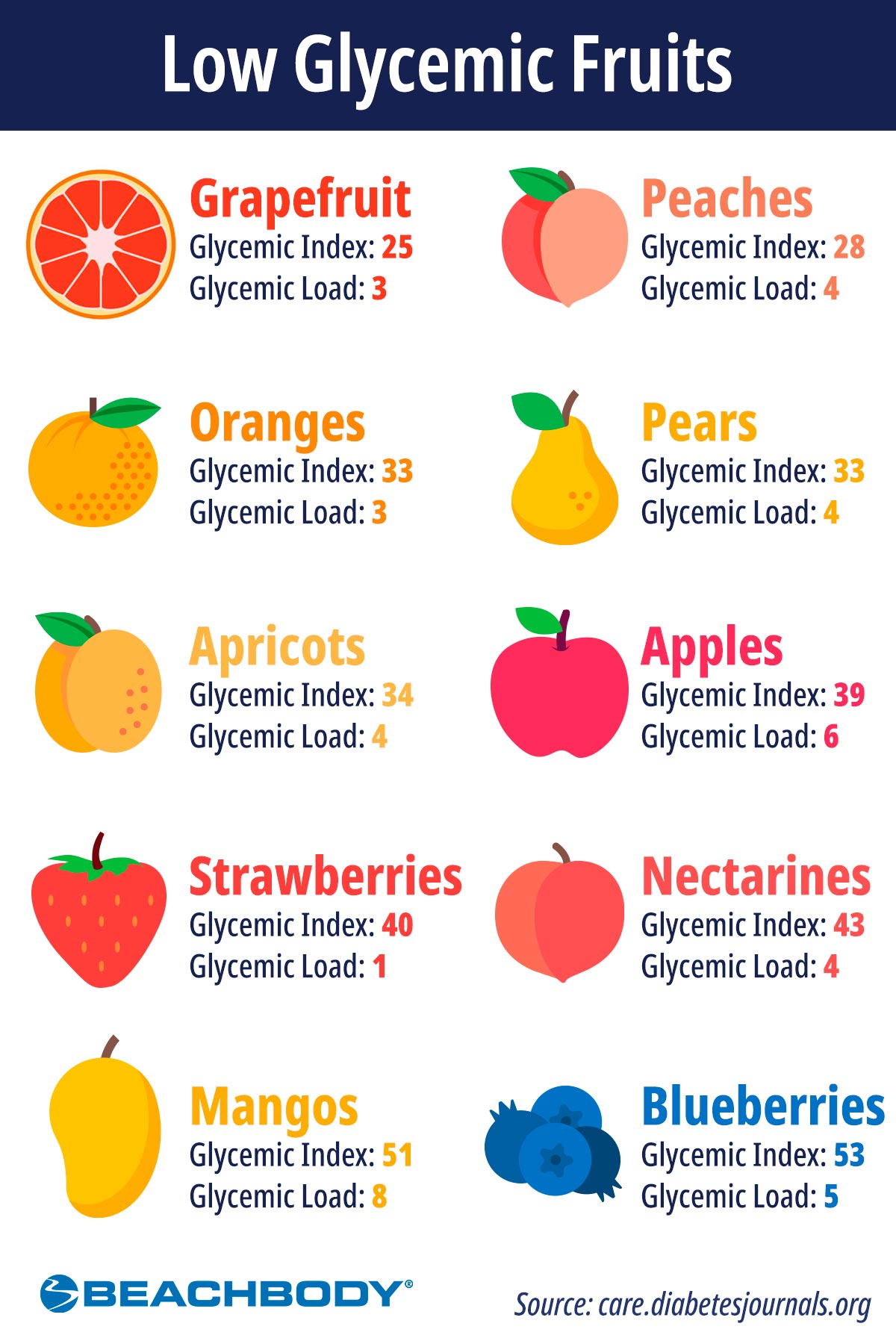Low glycemic fruits are an excellent choice for those who are watching their blood sugar levels. These fruits have a low glycemic index, which means they do not cause a rapid spike in blood sugar levels.
Table of Contents
This makes them a great option for people with diabetes, as well as those who are trying to lose weight or maintain a healthy diet.
Some examples of low glycemic fruits include berries, apples, pears, cherries, and grapefruit. These fruits are high in fiber, which helps to slow down the absorption of sugar into the bloodstream. They are also rich in vitamins and antioxidants, making them a nutritious choice for any diet.
Incorporating low glycemic fruits into a diet can be an easy and delicious way to improve overall health. By choosing these fruits over high glycemic options like bananas or watermelon, individuals can help to regulate their blood sugar levels and maintain a healthy weight.
Understanding Glycemic Index
Glycemic index (GI) is a measure of how quickly carbohydrates in food are converted into glucose and released into the bloodstream. Foods with a high GI value are quickly digested and absorbed, causing a rapid spike in blood sugar levels, while foods with a low GI value are digested more slowly, causing a gradual rise in blood sugar levels.
The GI of a food is determined by various factors, including the type of carbohydrate, the amount of fiber, the fat and protein content, and the cooking method. Generally, carbohydrates that are more refined and processed have a higher GI value than those that are less processed and contain more fiber.
The GI scale ranges from 0 to 100, with pure glucose having a GI value of 100. Foods with a GI value of 70 or higher are considered high GI foods, while those with a GI value of 55 or lower are considered low GI foods.
It is important to note that the GI of a food is not the only factor that affects blood sugar levels. The amount of carbohydrates consumed, the timing of meals, and individual factors such as insulin resistance also play a role.
Some examples of low GI fruits include cherries, apples, pears, grapefruit, and berries. These fruits are a good choice for those looking to manage blood sugar levels and maintain a healthy diet.

Benefits of Low Glycemic Fruits
Low glycemic fruits are an excellent addition to any diet. They are packed with essential vitamins, minerals, and fiber, and they provide a range of health benefits. Here are some of the key benefits of including low glycemic fruits in your diet:
1. Improved Blood Sugar Control
Low glycemic fruits have a minimal effect on blood sugar levels. They contain complex carbohydrates that are slowly digested, which means they release glucose into the bloodstream at a slower rate. This slow and steady release of glucose helps to prevent spikes in blood sugar levels, making low glycemic fruits an excellent choice for people with diabetes or anyone looking to maintain stable blood sugar levels.
2. Reduced Risk of Chronic Diseases
Low glycemic fruits are rich in antioxidants, which help to protect the body against oxidative stress. Oxidative stress is linked to the development of chronic diseases such as cancer, heart disease, and Alzheimer's disease. By including low glycemic fruits in your diet, you can help to reduce your risk of these diseases.
3. Improved Digestive Health
Low glycemic fruits are an excellent source of fiber, which is essential for good digestive health. Fiber helps to promote regular bowel movements, prevent constipation, and reduce the risk of colon cancer. By including low glycemic fruits in your diet, you can help to improve your digestive health and reduce the risk of digestive disorders.
4. Weight Management
Low glycemic fruits are an excellent choice for anyone looking to manage their weight. They are low in calories and high in fiber, which means they can help to keep you feeling full for longer periods. By including low glycemic fruits in your diet, you can reduce your overall calorie intake and promote weight loss.
Overall, low glycemic fruits are an excellent addition to any diet. They provide a range of health benefits and are easy to incorporate into your daily routine. By choosing low glycemic fruits, you can improve your overall health and reduce your risk of chronic diseases.
Examples of Low Glycemic Fruits
When it comes to low glycemic fruits, there are many options to choose from. Here are some examples of low glycemic fruits that can be incorporated into a healthy diet.
Berries
Berries are a great option for those looking for low glycemic fruits. They are high in fiber, which helps slow down the absorption of sugar into the bloodstream. Some examples of low glycemic berries include:
- Strawberries
- Blueberries
- Raspberries
- Blackberries
Stone Fruits
Stone fruits are another great option for those looking for low glycemic fruits. They are high in fiber and contain natural sugars that are released slowly into the bloodstream. Some examples of low glycemic stone fruits include:
- Peaches
- Plums
- Nectarines
- Apricots
Citrus Fruits
Citrus fruits are a good source of vitamin C and other nutrients. They are also low in glycemic index, making them a great option for those looking for low glycemic fruits. Some examples of low glycemic citrus fruits include:
- Grapefruit
- Oranges
- Lemons
- Limes
Pears and Apples
Pears and apples are a good source of fiber and other nutrients. They are also low in glycemic index, making them a great option for those looking for low glycemic fruits. Some examples of low glycemic pears and apples include:
- Granny Smith Apples
- Bartlett Pears
- Gala Apples
- Red Delicious Apples
Incorporating these low glycemic fruits into a healthy diet can help regulate blood sugar levels and provide a variety of nutrients.

How to Incorporate Low Glycemic Fruits into Your Diet
Low glycemic fruits are a great addition to any diet. They are packed with vitamins, minerals, and fiber, and they won't spike your blood sugar levels like high glycemic fruits can. Here are a few tips on how to incorporate low glycemic fruits into your diet:
1. Choose the Right Fruits
When it comes to low glycemic fruits, there are plenty of options to choose from. Some of the best low glycemic fruits include:
- Berries (strawberries, raspberries, blueberries, blackberries)
- Apples
- Pears
- Oranges
- Grapefruit
- Peaches
- Plums
- Kiwi
- Cherries
2. Add Them to Your Meals
One of the easiest ways to incorporate low glycemic fruits into your diet is to add them to your meals. Here are a few ideas:
- Add berries to your morning oatmeal or yogurt
- Top your salad with sliced apples or pears
- Include grapefruit or oranges in your breakfast
- Add kiwi to your smoothie
- Use peaches or plums in a fruit salad
3. Snack on Low Glycemic Fruits
Low glycemic fruits also make great snacks. Here are a few ideas:
- Pack a small apple or pear in your lunch
- Snack on a handful of berries
- Cut up some kiwi or peach for a mid-afternoon snack
- Enjoy a small bowl of cherries for dessert
4. Be Mindful of Portion Sizes
While low glycemic fruits are healthy, it's still important to be mindful of portion sizes. Fruits do contain natural sugars, so it's important not to overdo it. Stick to one or two servings of fruit per day, and make sure to balance your meals with other healthy foods like vegetables, lean proteins, and whole grains.
Incorporating low glycemic fruits into your diet is easy and delicious. By choosing the right fruits, adding them to your meals, snacking on them, and being mindful of portion sizes, you can enjoy the benefits of low glycemic fruits without sacrificing taste or variety.
Potential Risks and Considerations
While low glycemic fruits offer many health benefits, there are still some potential risks and considerations to keep in mind.
Sugar Content
Even though low glycemic fruits have a lower impact on blood sugar levels, they still contain sugar. People with diabetes or other blood sugar-related conditions should monitor their fruit intake and work with a healthcare provider to determine safe serving sizes.
Allergic Reactions
Some people may have allergic reactions to certain low glycemic fruits, such as kiwi or strawberries. Symptoms can range from mild to severe and may include itching, swelling, or difficulty breathing. If someone experiences any of these symptoms after eating a low glycemic fruit, they should seek medical attention immediately.
Pesticide Residue
Like all fruits, low glycemic fruits may contain pesticide residue. It's important to choose organic options when possible and to wash all fruits thoroughly before eating.
Interactions with Medications
Some low glycemic fruits, such as grapefruit, can interact with certain medications. People taking medication should consult with their healthcare provider before adding any new low glycemic fruits to their diet.
Overall, low glycemic fruits are a healthy addition to any diet. However, it's important to be aware of these potential risks and considerations to ensure safe and healthy consumption.
Conclusion
Incorporating low glycemic fruits into one's diet can have numerous health benefits. These fruits provide a steady source of energy and help regulate blood sugar levels, making them an excellent choice for those with diabetes or those looking to manage their weight.
Some of the top low glycemic fruits include berries, cherries, apples, pears, and plums. These fruits can be enjoyed on their own as a snack, added to smoothies, or used to sweeten recipes in place of high glycemic sweeteners.
It's important to note that while low glycemic fruits can be a healthy addition to one's diet, they should still be consumed in moderation. Fruits still contain natural sugars, and consuming too much can lead to an increase in blood sugar levels.
Overall, incorporating low glycemic fruits into one's diet is a simple and effective way to improve overall health and well-being. By choosing these fruits over high glycemic options, individuals can enjoy a steady source of energy and avoid the negative health effects associated with high blood sugar levels.
Eat well, live better!




